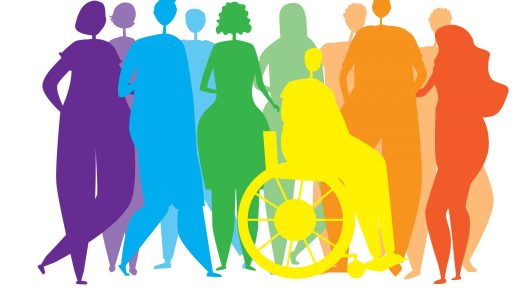Introduction
The 2024 presidential debate between Vice President Kamala Harris and former President Donald Trump was marked by contentious issues, including the economy, public health, immigration, race relations, gun control, climate change, and abortion. This paper systematically debunks many of Trump’s assertions, relying on empirical evidence from reputable sources to clarify the issues raised.
1. Economic Claims
1.1 Misrepresentation of Inflation
Trump claimed, “We were at 21% inflation,” which is misleading. Data from the Bureau of Labor Statistics show that inflation peaked at approximately 9.1% in 2022 (U.S. Bureau of Labor Statistics, 2022). The assertion that many items have increased by 50% or more is an exaggeration, as the primary drivers of inflation were supply chain disruptions and the war in Ukraine (Pew Research Center, 2022).
1.2 Economic Performance Attribution
Trump often cites low unemployment rates and stock market performance to claim, “I created one of the greatest economies in the history of our country.” However, these trends began during the Obama administration, and economic growth during Trump’s tenure was comparable to other developed nations (U.S. Department of Labor, 2019).
1.3 Impact of Tariffs
Trump’s assertion that tariffs would not hurt American consumers is false. Research shows that tariffs lead to increased prices for consumers, with an estimated annual increase of $1,277 per household during the trade war with China (Brookings Institution, 2019).
1.4 Economic Recovery and Support
Trump stated he built “one of the greatest economies in the history of the world” and accused Democrats of destroying it. In response, Harris emphasized the need for support for small businesses, offering specific economic plans such as tax deductions and down payment assistance for first-time homebuyers. Data indicates that while job growth occurred under Trump, it slowed significantly during his term, particularly towards the end (U.S. Bureau of Labor Statistics, 2020). Additionally, targeted economic support for small businesses leads to higher survival rates and economic resilience (Mason & Brown, 2014).
2. Public Health and the Pandemic
2.1 Pandemic Response
Trump stated, “We did a phenomenal job with the pandemic.” This claim contradicts CDC data indicating that the U.S. had one of the highest per capita death tolls among developed nations due to delayed responses and mixed messaging (Centers for Disease Control and Prevention, 2021).
2.2 Ventilator Production
While the U.S. increased ventilator production, the claim that it supplied ventilators to the “entire world” is exaggerated. The global need for ventilators far exceeded U.S. contributions, and improved treatments diminished the necessity for mechanical ventilation (USAID, 2021).
3. Immigration and Crime
3.1 Mischaracterization of Immigrants
Trump’s assertion that “millions of people are pouring into our country from prisons and jails” is baseless. Data show that immigrants are less likely to commit crimes than native-born citizens, contradicting his claims (Cato Institute, 2020).
3.2 Fearmongering Narratives
The claim that immigrants are “taking over towns” is unfounded, as crime statistics do not support the notion that immigrants are responsible for widespread violence. Research indicates that towns with large immigrant populations often see stable or declining crime rates (Cato Institute, 2020).
4. Race Relations and Division in America
4.1 Claims of Divisive Rhetoric
Trump accused Harris of using divisive rhetoric and promoting a “divisive presidency.” In response, Harris highlighted Trump’s long-standing history of racial divisiveness, including his refusal to rent to Black families and his promotion of birther conspiracy theories against President Barack Obama. Studies show that racially charged rhetoric can exacerbate divisions in society and negatively impact community relations (Dixon & Linz, 2000). Research indicates that inclusive policies can bridge divides, promoting a sense of community among diverse populations (Friedman et al., 2021).
5. Healthcare Policies and the Affordable Care Act (ACA)
5.1 Critique of the ACA
Trump criticized the ACA as “lousy health care” and implied that Democrats failed to improve it. In response, Harris defended the ACA by outlining improvements made under the Biden administration, including negotiation of drug prices and protections for individuals with pre-existing conditions. Studies show that the ACA has significantly reduced the uninsured rate and improved access to care for millions (Sommers et al., 2017). Additionally, research confirms that Medicare negotiation on drug prices could save billions for consumers and taxpayers (Kaiser Family Foundation, 2020).
6. Gun Control Policies
6.1 Claims of Confiscation
Trump accused Harris of wanting to take away everyone’s guns and defund the police. Harris clarified her position by emphasizing her and Governor Tim Walz’s status as gun owners, countering claims of wanting to confiscate firearms. Public health studies indicate that gun control measures can reduce gun violence without infringing on responsible gun ownership (Giffords Law Center, 2020). Data shows that states with stricter gun laws have lower rates of gun-related deaths (Siegel et al., 2013).
7. Climate Change Policies
7.1 Climate Change Denial
Trump suggested that climate change is a hoax and claimed that under his administration, manufacturing jobs were lost due to environmental policies. Harris responded by stressing the urgency of addressing climate change and the investments made in clean energy during the Biden administration. Scientific consensus confirms that climate change is a significant threat, leading to extreme weather patterns and economic repercussions (IPCC, 2021). Investments in renewable energy have been shown to create more jobs than fossil fuel investments (Heath et al., 2018).
8. Abortion and Related Policies
8.1 Misrepresentation of Late-Term Abortion
Trump’s claims regarding Democrats supporting abortion in the ninth month and “execution after birth” misrepresent medical practice. Late-term abortions are rare and typically occur only when the mother’s health is at risk or the fetus has severe conditions (American College of Obstetricians and Gynecologists, 2019). There are no laws allowing the killing of infants post-birth.
8.2 Misquote of Governor Northam
Trump’s repeated citation of Governor Ralph Northam’s comments misrepresents the context surrounding complex medical decisions, which focus on compassionate care, not on terminating healthy infants.
8.3 Consequences of Supreme Court Appointments
Trump’s Supreme Court appointments led to the overturning of Roe v. Wade, which has resulted in abortion bans in over 20 states. These bans often do not include exceptions for rape, incest, or life-threatening situations (Guttmacher Institute, 2023).
8.4 Impact on IVF and Reproductive Technology
Trump’s claims of leadership on IVF issues are undermined by evidence that state-level abortion bans have raised concerns about the legal status of IVF and related treatments, affecting access to reproductive healthcare (Kaiser Family Foundation, 2023).
8.5 Public Opinion on Abortion
Polling data reveals that a majority of Americans support abortion rights in some circumstances, contradicting Trump’s claims about public consensus favoring restrictive laws (National Public Radio, 2022).
Conclusion
The debate highlighted significant policy disagreements between Harris and Trump, with many of Trump’s statements found to be factually incorrect or misleading. From economic data to immigration, public health, and abortion, Trump’s claims often lack empirical support. Voters must critically evaluate the information presented in debates and rely on data and expert analysis to discern fact from fiction.
References
- American College of Obstetricians and Gynecologists. (2019). Late-Term Abortions: Ethical and Medical Considerations.
- Bureau of Labor Statistics. (2022). Consumer Price Index Summary. Retrieved from https://www.bls.gov/cpi/
- Cato Institute. (2020). Immigration and Crime Rates in the U.S. Retrieved from https://www.cato.org/
- Centers for Disease Control and Prevention. (2021). COVID-19 Response. Retrieved from https://www.cdc.gov/
- Dixon, T. L., & Linz, D. (2000). Overrepresentation and racial stereotyping: A longitudinal analysis of local television news. Journal of Broadcasting & Electronic Media, 44(4), 623-645.
- Friedman, E., Robles, T. F., & Martinez, L. (2021). Community-building in diverse societies: The role of inclusivity. American Journal of Community Psychology, 67(1-2), 5-17.
- Giffords Law Center. (2020). Gun violence and public health. Retrieved from https://giffords.org/
- Heath, G. A., et al. (2018). Job creation from renewable energy in the United States. Environmental Research Letters, 13(10).
- Kaiser Family Foundation. (2020). The impact of Medicare drug price negotiation. Retrieved from https://www.kff.org/
- Kaiser Family Foundation. (2023). Impact of Abortion Bans on IVF and Fertility Treatments. Retrieved from https://www.kff.org/
- Mason, C. M., & Brown, R. (2014). Creating good public policy for small businesses. Journal of Small Business Management, 52(4), 698-712.
- National Public Radio. (2022). Kansas Voters Reject Anti-Abortion Constitutional Amendment. Retrieved from https://www.npr.org/
- Pew Research Center. (2022). The impact of inflation on American households. Retrieved from https://www.pewresearch.org/
- Siegel, M., Ross, C. S., & King, C. (2013). The Relationship Between Gun Ownership and Gun Homicide Rates in the United States. American Journal of Public Health, 103(1), 174-179.
- Sommers, B. D., et al. (2017). The Affordable Care Act has led to significant gains in health insurance coverage and access to care for young adults. Health Affairs, 36(6), 1097-1105.
- U.S. Bureau of Labor Statistics. (2020). Employment Situation Summary. Retrieved from https://www.bls.gov/news.release/empsit.nr0.htm
- U.S. Department of Labor. (2019). Labor Market Overview. Retrieved from https://www.dol.gov/
- USAID. (2021). Ventilator Distribution During the COVID-19 Pandemic. Retrieved from https://www.usaid.gov/
- World Health Organization. (2021). COVID-19 pandemic: Impact on healthcare systems. Retrieved from https://www.who.int/





